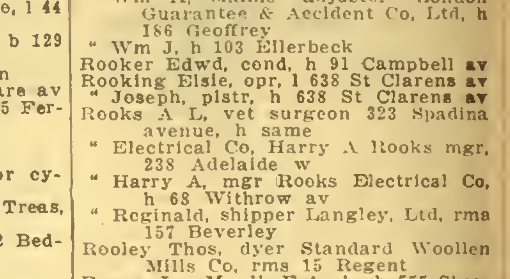Rooks, Alfred
- BCV.stories

- Jan 15, 2022
- 3 min read

Born in November 1888 on the island of Trinidad, Alfred Louis Rooks grew up on the island. After he finished his schooling he worked as a timekeeper with a company helping build the Panama Canal. But, Mr. Rooks had bigger plans. In August 1911 Mr. Rooks arrived in Canada. His goal was to be a veterinarian, to earn his degree at the Ontario Veterinary College, then part of the University of Toronto. He graduated in 1916, one of two black students in the class.
When he graduated, the war in Europe was entering its third year. On 22 July 1916 Dr. Rooks enlisted in the Militia in Toronto as a member of the Canadian Army Veterinary Corps. As he had a university degree in veterinary medicine he given the rank of lieutenant. At the time the Canadian Army Veterinary Corps in Europe was suffering a shortage of doctors. Horses were still the main source of transport and power for the Canadian Expeditionary Force and they needed care.
Lieutenant Rooks was sent to the United Kingdom to enlist in the Canadian Army Veterinary Corps that was part of the Canadian Expeditionary Force. He was, however, rejected by Col. Neill., the head of the Veterinary Corps in England who apparently had a dislike of Blacks and Catholics. He used the excuse that none of the veterinary officers he rejected had the 3 to 4 years experience he wanted. At this time in Canada there were very few remaining veterinarians who had this amount of experience. In fact, some students from the Ontario Veterinary college were enlisted as officers without having graduated. Lieutenant Rooks therefore returned to Canada in October 1916. He remained a member of the Militia until 1921.
In 1921 Dr. Rooks moved to Powassan, a municipality just south of North Bay, Ontario. This was a farming area, with cattle and horses being important animals. Here he opened a veterinary practice. Dr. Rooks quickly built up a solid reputation.
On 21 May 1928 Dr. Rooks was approved as the veterinary inspector for the City of North Bay. This was an important position because of the impact it had on public health. Dr. Rooks' duties included inspecting the cows providing milk, checking the cows for tuberculosis, and checking the quality of the milk, such as the fat content. He was also required to inspect the milk facilities on farms for cleanliness and inspect butchers and other places selling meats. He would also inspect the meats. For this he was paid $900 a year. He would serve in this role for more than a decade.
Being the veterinary inspector was not always an easy or pleasant task. His work could bring him into conflict with storekeepers. For example, in 1937 a clerk at a butcher shop tried to have him charged with disorderly conduct when he seized meat on which a cat had been sitting. The charge was dismissed.
Dr. Rooks built up a reputation as an expert. He sometimes was asked to accompany federal inspectors on inspection and investigation trips, such as trying to determine the sources of a cattle disease outbreak. He also performed occasional work for the Forestry Branch of the Government of Ontario.
Dr. Rooks continued to maintain his practice, helping local farmers as well as pet owners. Sometimes they were unusual situations, such as inspecting a dog from a dog sled team that was going through the area and that had fractured a foreleg. He continued to practice veterinary medicine past his 60th birthday.
Dr. Rooks married Marietta Vignale in Toronto in May 1915. She too was from Trinidad. They remained married throughout his life and had one daughter, Marietta Gladys.
Dr. Rooks died on 5 February 1960 in North Bay and was buried in that city.

.png)














Comments